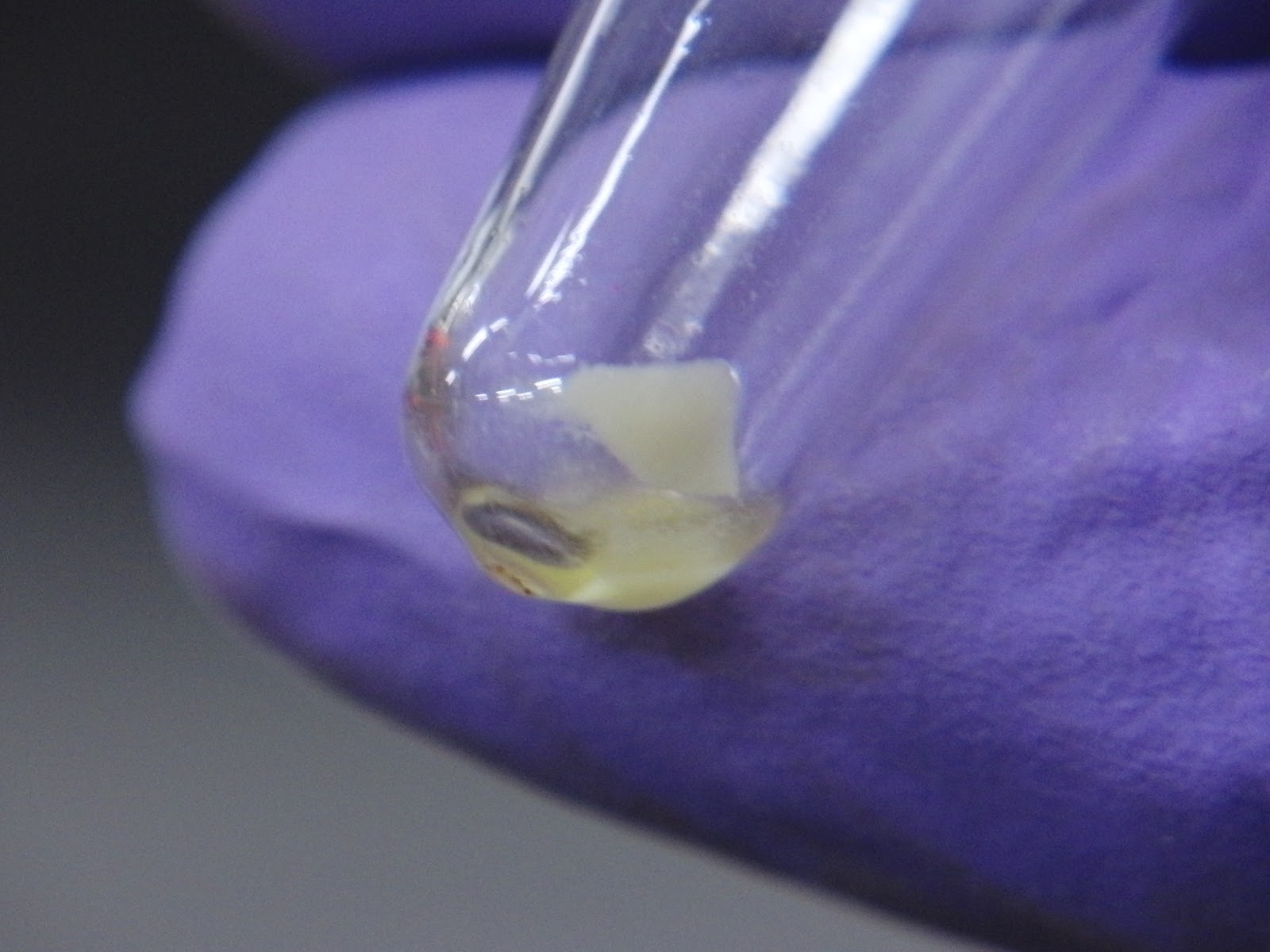The Ammonium Carbonate Group
Three ions of this group form carbonates that are precipitated by ammonium carbonate in the presence of an ammonium chloride-ammonia buffer. Their chlorides, sulfides, and hydroxides are much too soluble to precipitate with preceding groups.
Ca++, Sr++, Ba++
Calcium, strontium, and barium are the alkaline earth metals of Periodic Group IIA. Radium, the last member of this group resembles barium in its chemical behavior but is not considered here because its scarcity and radioactivity. Beryllium, the first member, resembles aluminum more closely than it does the other members of Group IIA and accompanies aluminum in the analytical separations of qualitative analysis. Magnesium, too, stands apart from the alkaline earth metals, although it resembles calcium more closely than it does beryllium. By proper choice of conditions, little if any magnesium carbonate is precipitated with Group 4.
Outline
Original Sample:
Removal of excess ammonium salts:
Add 5 drops 16M HNO3.
Boil it to dry and let all ammonium sublimate. Then cool it down.Add some 6M HCl to
dissolve the precipitation. Add 10 drops water. Add 10 drops of water to move
the solution in a centrifuge tube. Centrifuge it and discard the precipitation and collect solution.
Precipitation of the group
Add 1 drop NH4Cl,
use NH3(aq) to alkalize the solution, and add 5 drops (NH4)2CO3.
Waite for minutes let the reaction completes.
Carbonates form at the moment
Centrifuge the solution and separate the solution and precipitation.Solution is for the test of Cation Group 5
Precipitation BaCO3, SrCO3, CaCO3
Add 6M acetic acid
to dissolve the precipitation, add some 3M NH4OAc, 10 drops water,
1~3 drops K2CrO4 . And then centrifuge it. Separate the solution from the precipitation. Wash the precipitation
by water.
Chromate is just react with barium ions
Precipitation BaCrO4
Precipitation BaCrO4 : Barium
Test
Dissolve the precipitation
in 1~2 drops 6M HCl(aq) , add 1mL water and add 1/4 spatula-full NH2SO3H crystal and stir to dissolve. Heat in a bath of boiling water bath for 10 minutes.
White crystalline precipitation: BaSO4 , presence of Ba
Solution Sr2+, Ca2+, CrO42-
Add some K2CrO4 solution
let the solution becomes yellowish. Add some 6M NaOH and add 5 drops Na2CO3(aq)
and warm it for a while. Centrifuge it, collect all precipitation and discard
solution.
Precipitation SrCO3, CaCO3
Add some nitric
acid to dissolve the precipitation, and boil it to dry in a crucible, and then cool the crucible
down.
Precipitation in the crucible
Add some 16M nitric acid to dissolve the precipitation inside the crucible and add some 16M nitric acid to transfer the solution in to a centrifuge tube. Separate the solution and precipitation.
Use 16 M nitric acid to dissolve the precipitation
Note: 16M nitric acid must be used. Because we use common ion effect to let strontium ion precipitate out. If the nitric acid is not concentrate enough, it could not support enough nitrate ions to boost strontium nitrate crystal out.
Sr(NO3)2, and some
Ca(NO3)2 precipitated out
Precipitation Sr(NO3)2,
Ca(NO3)2 : Sr Test
Add 5~10 drops
water, add some NH3(aq) to alkaline the solution. Add several drops triethanolamine, and few drops (NH4)2SO4 . Warm it in water bath for a while.
White
precipitation SrSO4: Presence of Sr
Solution
Ca2+, HNO3: Ca Test
Add 1mL water, some
NH3(aq) , and some (NH4)2C2O4
White precipitation: CaC2O4
References:
1. Qualitative Analysis and Electrolytic Solution
2. Introduction to Semimicro Qualitative Analysis (8 ed.)












No comments:
Post a Comment